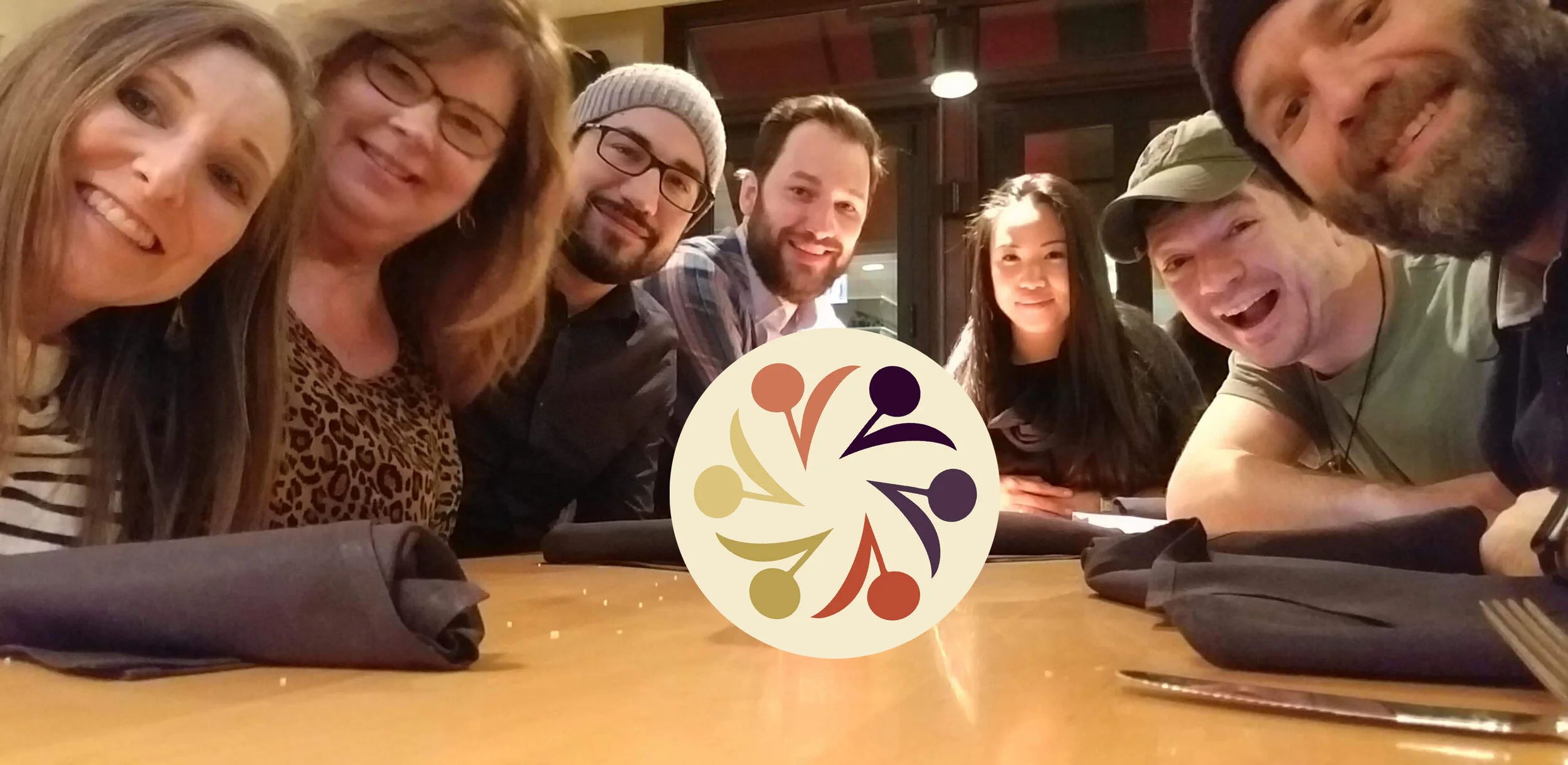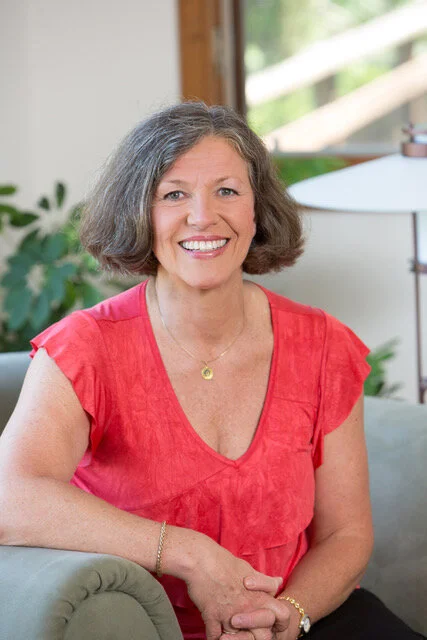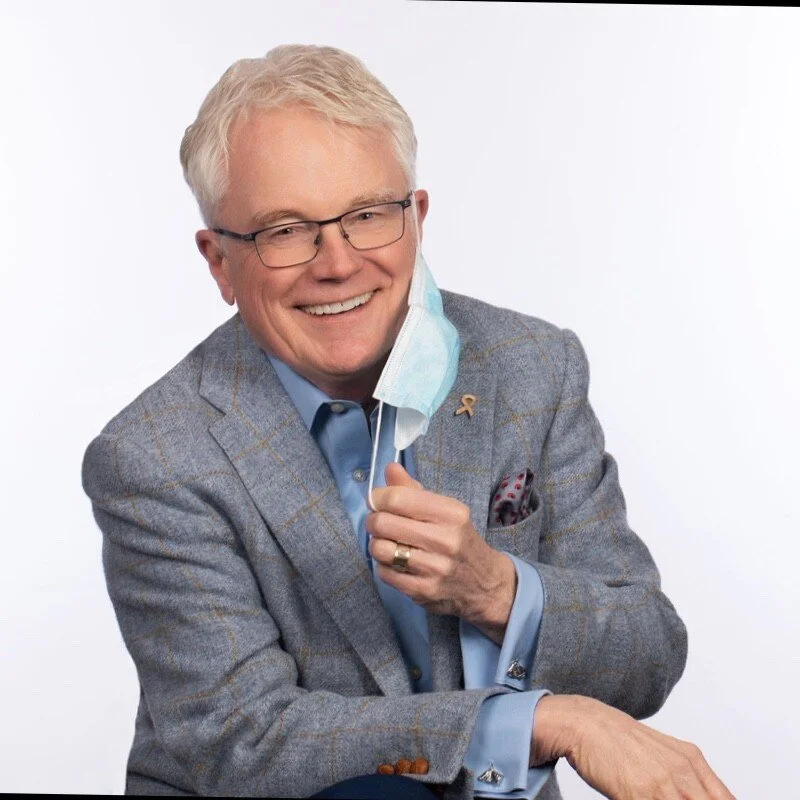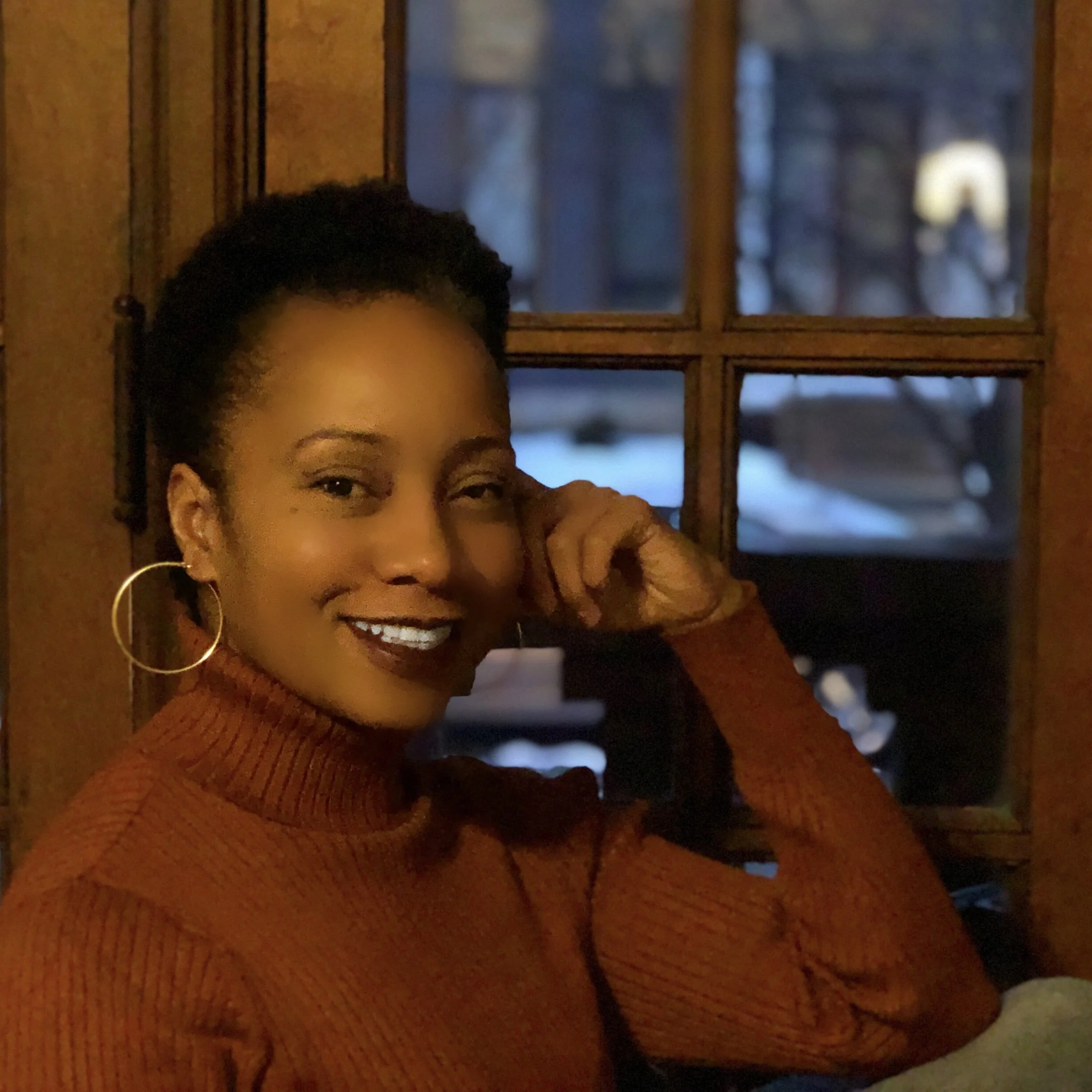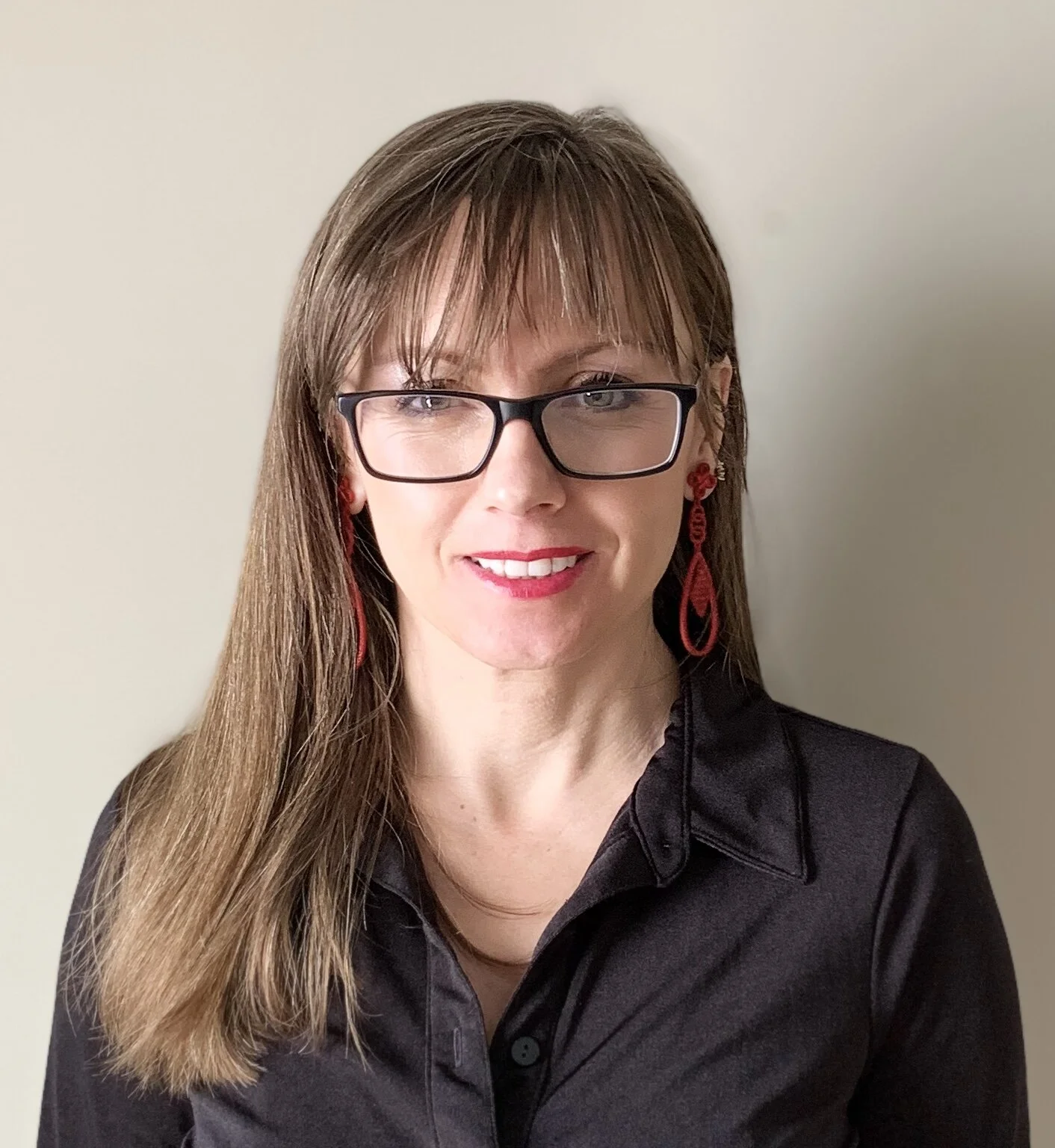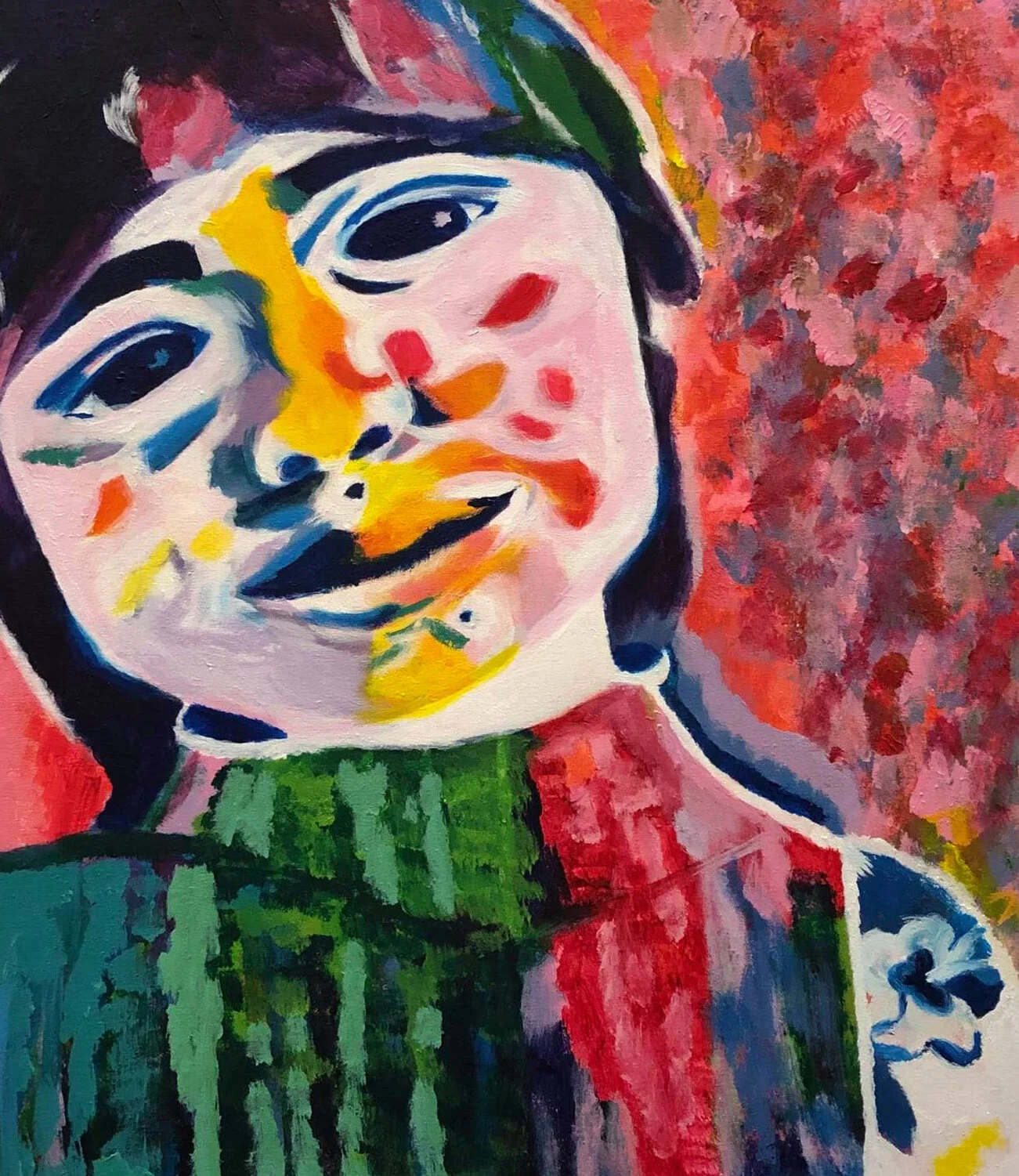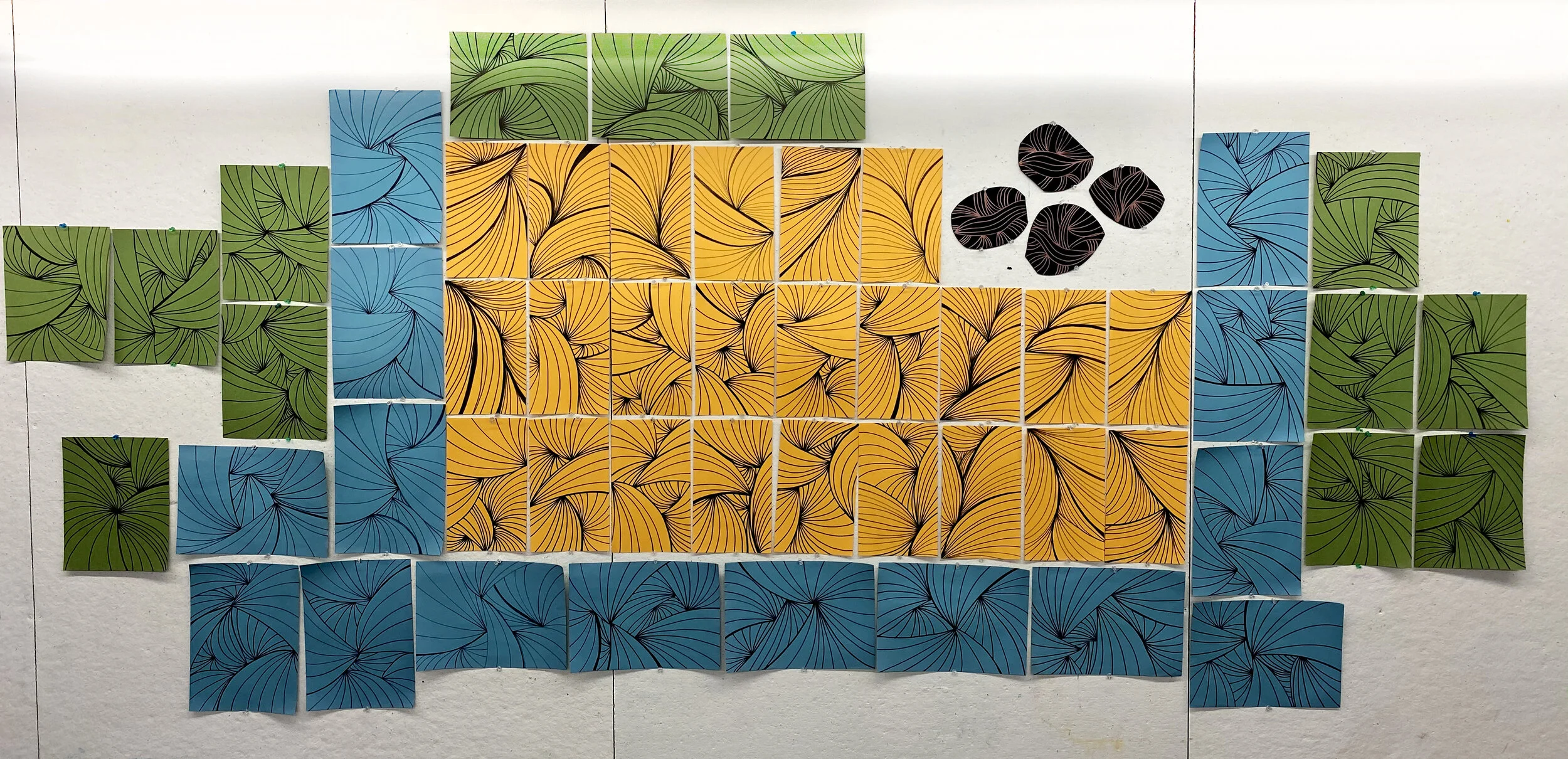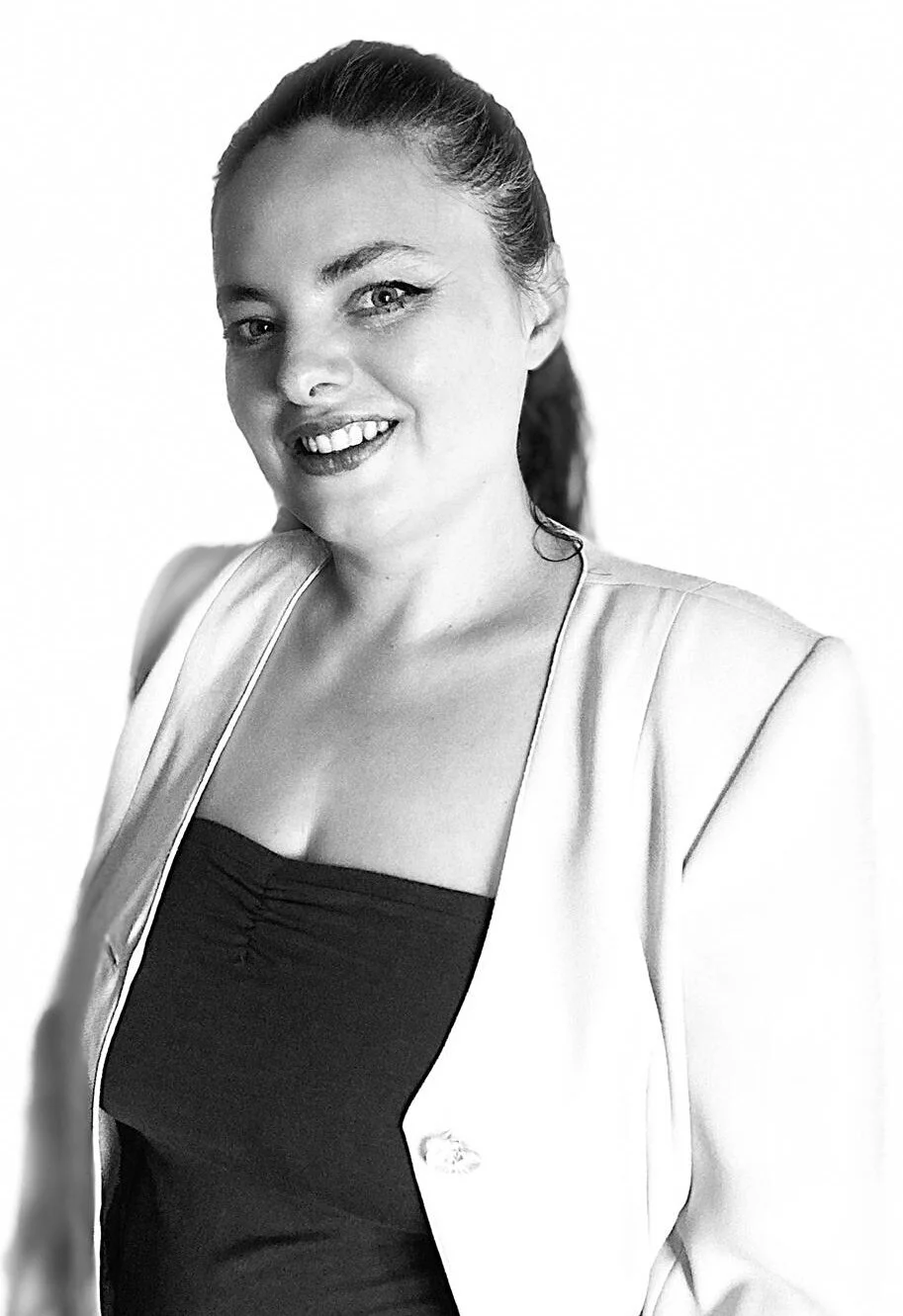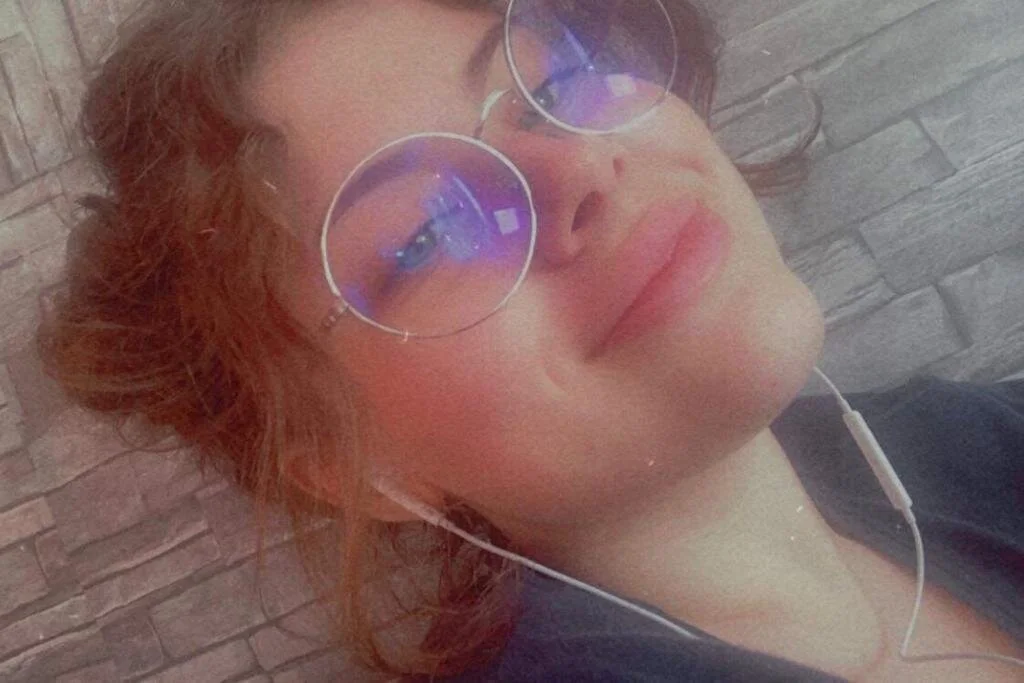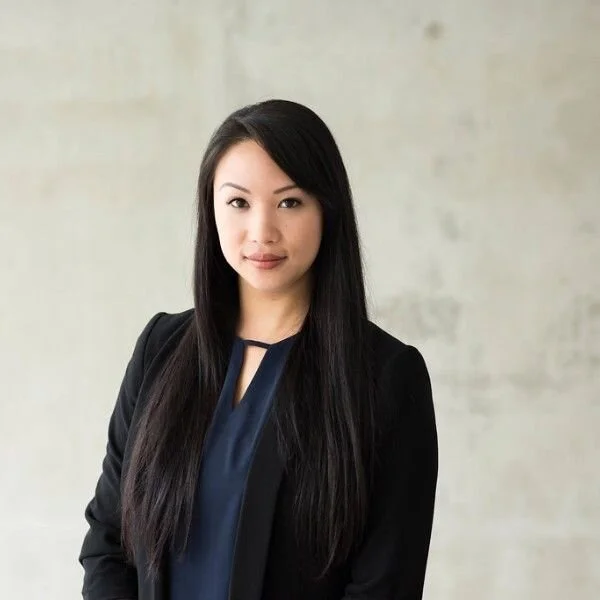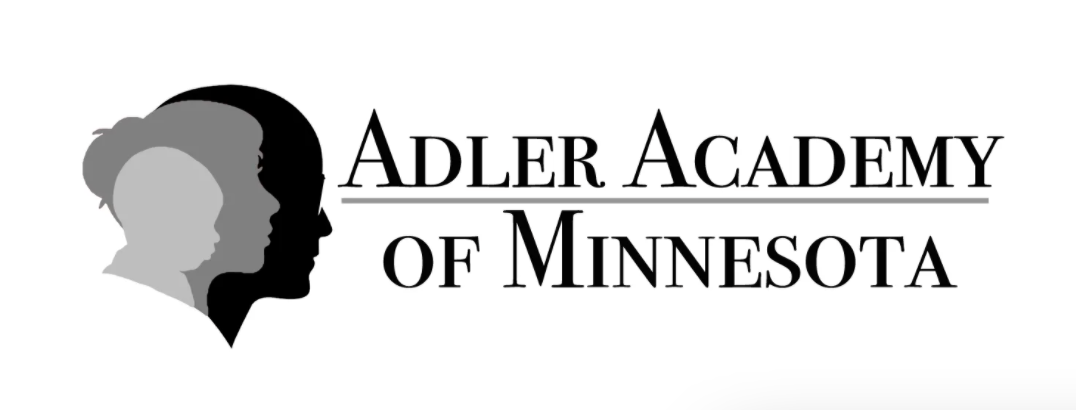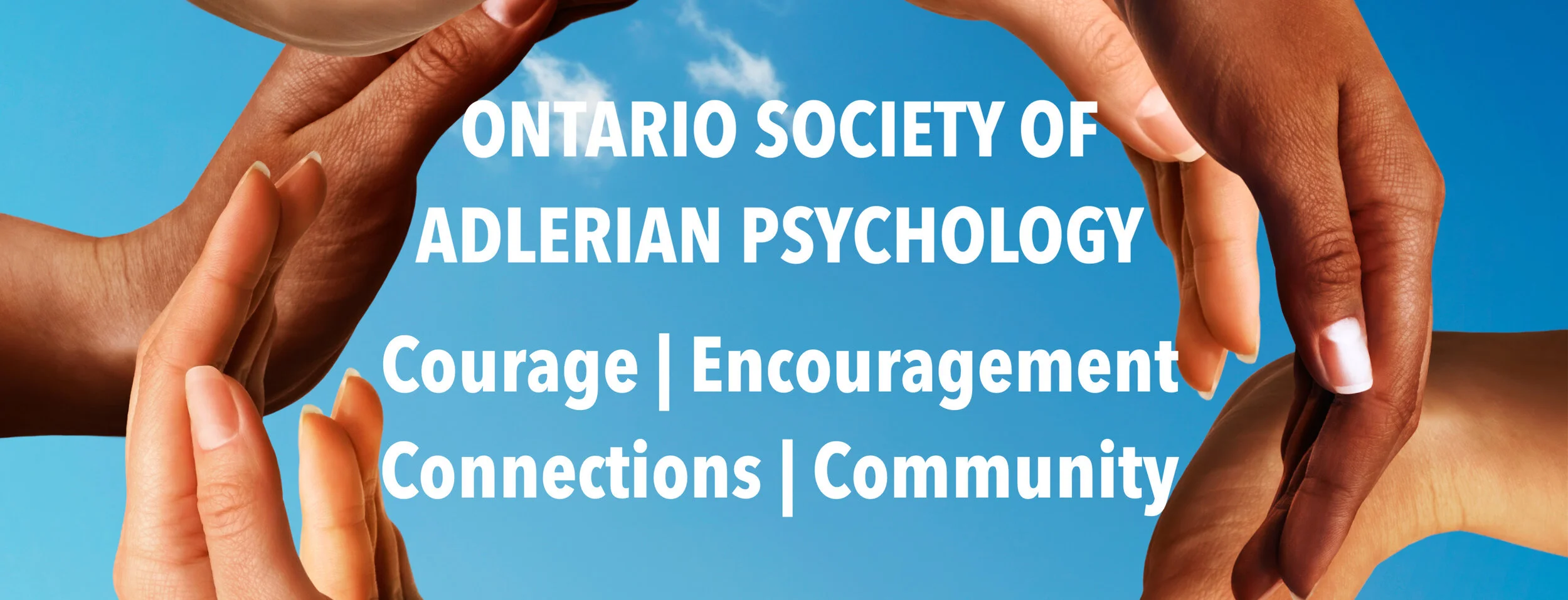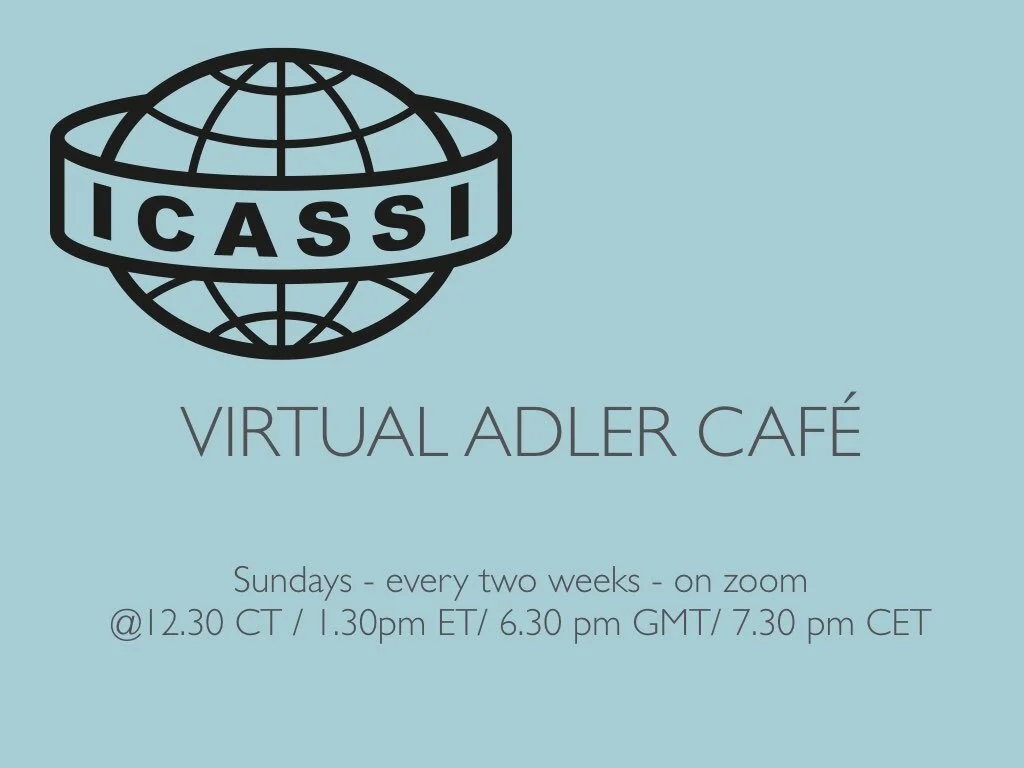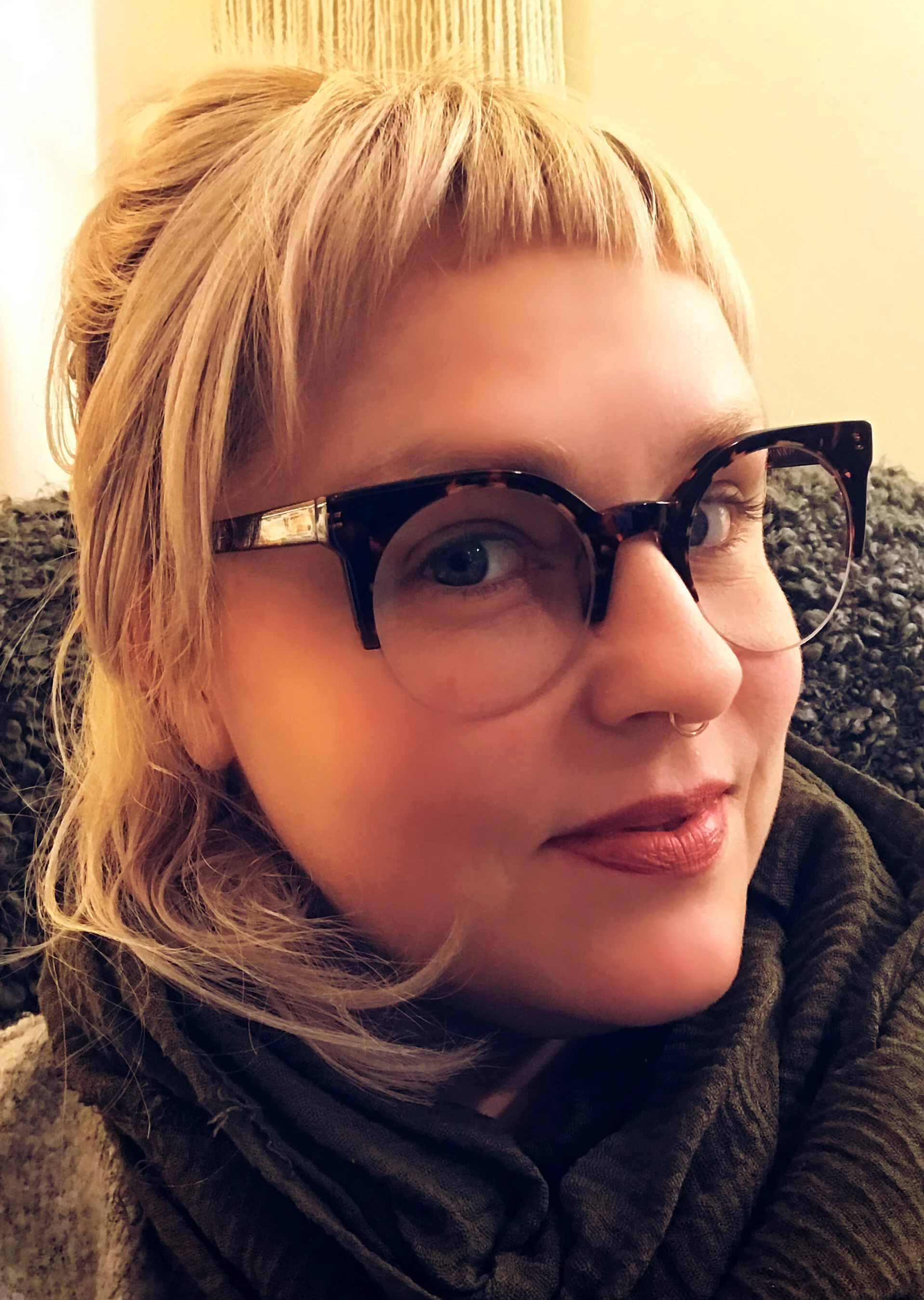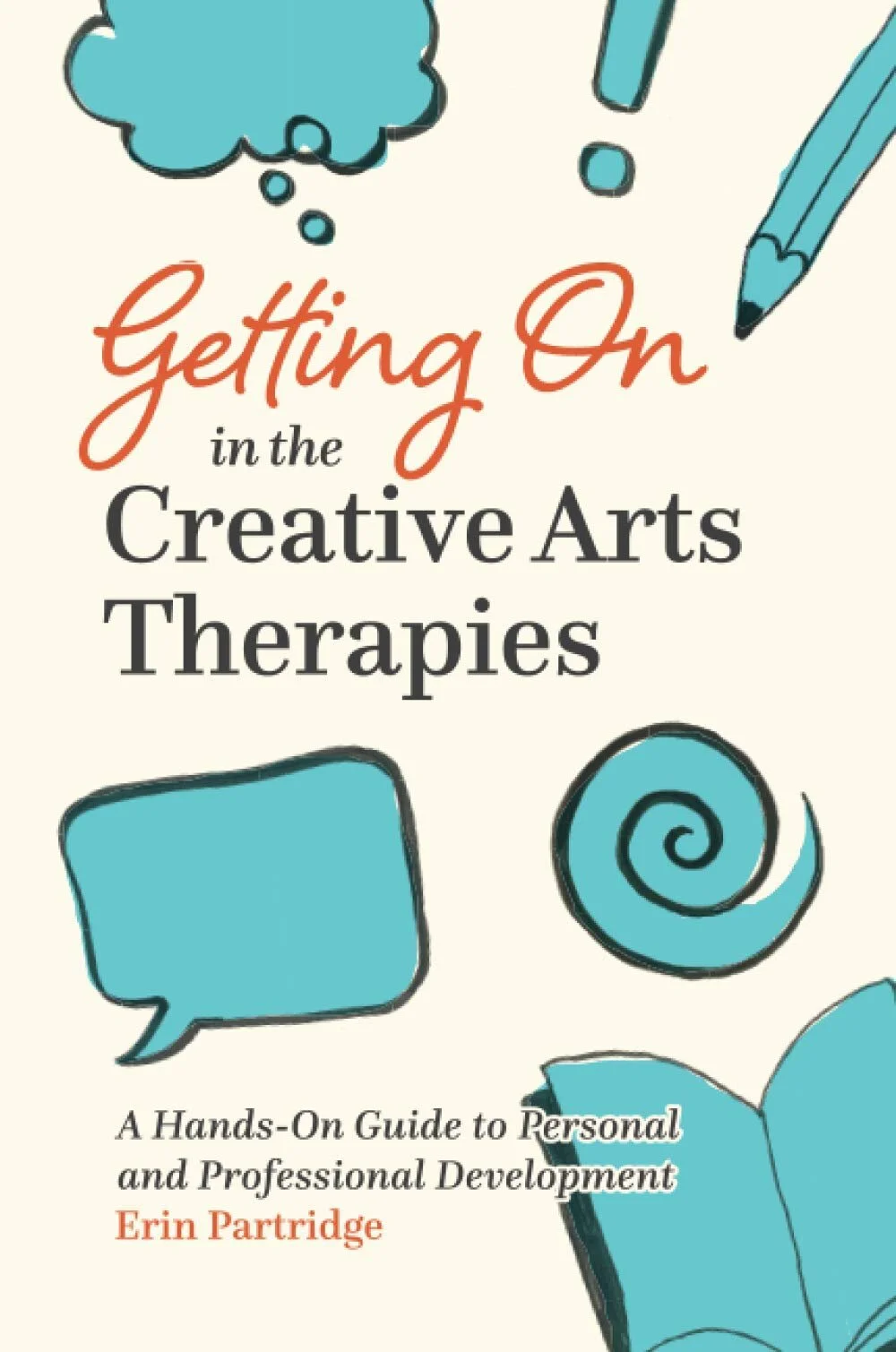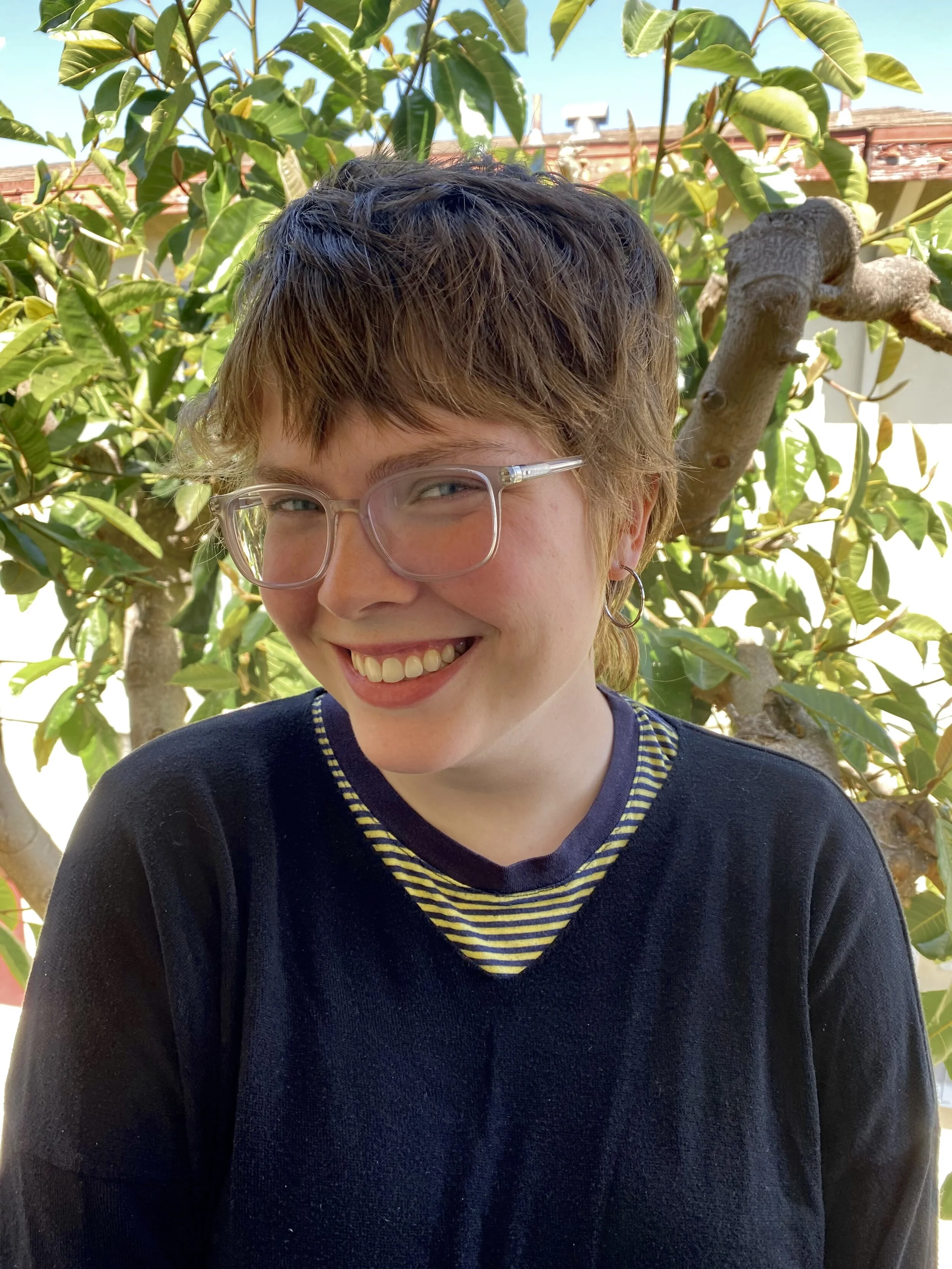Welcome to the Connection

April 2021 Issue
Letter from a Co-Editor
Alfred Adler (Adler et al., 1964) encouraged us to “see with the eyes of another, listen with the ears of another, and feel with the heart of another” (p. 135).
As we reflect upon all of the injustices of our society, with a particular focus on the hate crimes against our fellow humans in Asian-American and Pacific Islander communities, we are saddened, outraged, and disgusted. Maybe we find ourselves preparing to fight these injustices. Maybe we are preparing to protect ourselves from the hate. Maybe we are in the middle of a fight not yet conquered. No matter where you find yourself in the fight for equality, we want you to know that we stand with you. As Adlerians, we come together as a community with one voice to oppose such nonsensical violence based on the very attributes that make up our unique individuality. We would like to publicly recognize our stance against these injustices and wish to highlight Alfred Adler’s feelings regarding social injustices:
“It is the individual who is not interested in his fellow men who has the greatest difficulties in life and provides the greatest injury to others. It is from among such individuals that all human failures spring.” (Adler, 1931) (p. 275).
Please, take a moment of silence, a moment of loud outcry, a moment of prayer, a moment that moves you to stand in unity with us against such hate crimes and acts of evil violence.
A special thanks to those who have contributed to this newsletter. We would like to particularly thank those who have made themselves vulnerable to sharing their personal experiences. We appreciate your courage and vulnerability. We honor your bravery. We appreciate your collaboration and respect your voice.
Please, continue to “see with the eyes of another, listen with the ears of another, and feel with the heart of another.” It is how we bring life to the hopeless, light into a darkened world, peace into chaos, and encouragement to the discouraged.
As a newsletter, we are working with the SJTF to understand how we can further support the communities within our reach. This will be an ongoing and emerging project in our attempt to honor the voice of multiculturalism and support our fellow humans.
Other news: As a fresh newsletter team launch, we are also working together to continue to develop our new format which means emerging and evolving guidelines, roles, and responsibilities, and learning how to best support the NASAP community and one another along this journey. Thanks for being patient with us as we are moving and changing! It is exciting and there have also been some growing pains, bumps, and bruises along the way. Please check out the submission guidelines every now and then to see how things have changed.
You may notice a new feature in this and future issues: translations of articles. We are so excited to be partnering with Adlerians from around the globe to bring NASAP content to people who speak multiple languages, including Spanish, French, Romanian, and Mandarin. If you’d like to help with translation, email us! In this issue, Michell Griffith’s piece on Ethics is translated into Romanian by a fellow contributor, Mirela Arsenie.
Last, I have some personal obligations that are demanding some additional time and energy from me. I will be stepping away for the May newsletter and will return for the June issue. We have a rockstar team who will continue to keep the newsletter rolling while I am away! Jess Minckley, the co-editor, will keep the party going while I’m away. Executive Director, Susan Belangee, has agreed to help the newsletter out as needed during my brief leave. Thanks, Susan for your support of the newsletter team! The May newsletter will be packed full of conference goodies! So, stay tuned!
Kind Regards,
Candace Sneed, Co-editor
References
Adler, A. (1931). What life could mean to you. Capricorn Books. (p. 275).
Adler, A. Ansbacher, H. L., & Ansbacher, R. R., (1964). The individual psychology of Alfred Adler. (Vol. 1154). Harper & Row. (p. 135).
President’s Address
“The security camera video was shocking in its brutality. A 65-year-old Filipino immigrant was walking down a street near Times Square when a man, in broad daylight, suddenly kicked her in the stomach. She crumpled to the sidewalk. He kicked her once in the head. Then again. And again. He yelled an obscenity at her, according to a police official, and then said, ‘You don’t belong here.’” New York Times, March 30, 2021.
I watched the video on the PBS Newshour. I was struck by a man inside the building who just stands there watching what is taking place outside. No one came to her aid. If this were an isolated incident of violence against Asian and Pacific Islander individuals it would still be shocking, but this is not the only video I have seen, and I am sure many of you have seen. And not every act of hate is captured by video. Hate crimes against AAPI persons have been escalating and are alarming.
Adler called on us to demonstrate social responsibility:
“The honest psychologist cannot shut his eyes to social conditions which prevent the child from becoming a part of the community and from feeling at home in the world, and which allow him to grow up as though he lived in enemy country. Thus the psychologist must work against nationalism when it is so poorly understood that it harms mankind as a whole; against wars of conquest, revenge, and prestige; against unemployment which plunges peoples into hopelessness; and against all other obstacles which interfere with the spreading of social interest in the family, the school, and society at large (Ansbacher & Ansbacher, p. 454).
Are we doing enough? Are we working against what harms our society? Are we willing to step in?
Adler said to trust only movement. The theme of our conference this year is “Social Justice: Community Healing through Movement.” This represents a start. But we cannot just be all talk. What are we doing?
- NASAP President Tim Hartshorne
Reference
Ansbacher, H. L., & Ansbacher, R. R. (1956) (Eds.). The individual psychology of Alfred Adler. New York: Basic Books.
From the Ethics Committee
By Michell L. Griffith
Dr. Griffith currently serves as a Department Chief and a Clinical Supervisor for a crisis walk-in clinic. The majority of clients present in extreme psychological distress, often voicing suicidal ideation to express their emotional pain. Her focus is to keep clients safe and instill hope for their future. In addition, she works with her staff to help them assess their comfort levels, help them identify how their distress may influence their clinical judgment and provides consultation and resources for evidence-based therapy and sound documentation.
Suicidal Clients & Ethical Considerations:
This past year has been challenging as we endured many situational and interpersonal factors, defined by Adler in his 1937 article Suicide, which may lead one to believe that suicide is the only solution (Ansbacher & Ansbacher, 1979).
As clinicians, we are likely experiencing an increase in clients who endorse either acute or chronic suicidal ideation. The felt responsibility to protect clients who believe life is no longer worth living is likely to collide with our belief system and may provoke fear and vulnerability. However, we can’t allow fear to hinder our efforts. Instead, we should focus on the courage the client had to enter therapy and their belief that things can improve.
Many providers feel ill-prepared dealing with suicidal clients. However, providers have the responsibility to be competent when a client is in a state of extreme distress. Mental health practitioners can increase their competency and awareness by seeking training in suicidology, utilize colleague consultation, and stay abreast of current research. Although many clinicians do not appreciate the task of documentation, documentation is vital for demonstrating competency (evidenced-based treatment), to provide a rationale for decision-making, and for the precautions that should be taken to ensure safety; which are addressed in the Ethical Principles of Psychologist and Code of Conduct (American Psychological Association, 2017).
Here are some basic considerations for documentation regarding client safety (not an all-inclusive list):
Limits of confidentiality address what the client should expect if they become a threat to themselves or others.
Assessment scales utilized addressing current mood and suicidal ideation (frequency of thoughts, intent, duration, last thought, and what prevents acting on these thoughts).
Risk and protective factors used to determine the level of risk (i.e. not elevated, low, intermediate, or high) when leaving your office, and overall risk level due to recent hospitalization or other stressors.
The mental status exam includes judgment, impulsivity, insight, and conditions that may increase risk (delusions, auditory commands, etc.).
Safety plan (not a contract for safety) includes triggers for suicidal ideation, internal coping techniques, individuals they can contact for support, suicidal hotline numbers, and where they can go if they do not believe they can keep themselves safe if after business hours.
What was addressed to keep the patient safe and rationale for their disposition?
Consider the following for documentation and decision-making: what are the risk and protective factors; what additional information would you need for determining current risk level for self or other harm; what would you consider for the safety plan; which mood and suicidal assessment tools would you utilize; what threshold/ criteria do you use to determine hospitalization-especially when the client does not want to be hospitalized; what are potential risks if hospitalization is involuntary; and what would you include in follow-up therapy notes?
Case: John is a 32-year-old male who has been married for the past five years, with a two-year-old son. He has been employed as a police officer for the past eight years, after completing a bachelor’s degree in criminal justice. His wife cleaned out their bank account and moved in with her paramour, taking their son; and she made false allegations he was abusive to gain sole custody. The allegations have led to an internal investigation with him being placed on administrative probation. Upon further assessment, he is not sleeping more than 2 hours a night due to rumination, has started to drink 4-6 beers per night, he is irritable with daily suicidal ideation (shooting himself) which is triggered by him being alone in his home. However, he does not act upon the thoughts due to thinking about his son (but noted if the son is taken from him or he loses his job, there is no reason for living). He has a family history of suicide (his father committed suicide when he was 15). John is fearful if hospitalized, this will impact custody and employment status.
*What additional recommendations could you provide for documentation, screening tools, resources, or training to help with ethical guidance for working with high-risk clients? Please provide feedback to Michell_griffith@hotmail.com to be addressed in the next issue.
References
Ansbacher, H. L., & Ansbacher, R. R. (1979). Alfred Adler Superiority and Social Interest A Collection of Later Writings Third Revised Edition. New York: W.W. Norton & Company INC.
American Psychological Association. (2017). With the 2016 Amendment to Standard 3.04 of the " Ethical Principles of Psychologists and Code of Conduct." Retrieved on 1 March 2021 at https://www.apa.org/ethics/code
Illustrations © Eloise Rae, 2021.
Clienții sinucigași și Considerații etice
Anul care a trecut a fost provocator, pe măsură ce am îndurat mulți factori situaționali și interpersonali, cum i-a definit Adler în articolul său, Suicide, din 1937, care ar putea conduce la credința că sinuciderea este singura soluție (Ansbacher & Ansbacher, 1979).
În calitate de clinicieni, probabil că experimentăm o creștere a numărului clienților care sprijină ideea suicidară, acut sau cronic. Responsabilitatea simțită de a proteja clienții care cred că viața nu mai merită trăită este probabil să se ciocnească cu sistemul nostru de credințe și poate provoca frică și vulnerabilitate. Totuși, nu putem permite fricii să ne împiedice eforturile. Ar trebui să ne concentrăm pe curajul pe care clientul l-a avut pentru a intra în terapie și credința lui că lucrurile se pot îmbunătăți.
Mulți furnizori de servicii psihologice se simt slab pregătiți în legătură cu clienții sinucigași, dar avem responsabilitatea de a fi competenți atunci când un client se află într-o stare de suferință extremă. Ne putem dezvolta competențele și conștientizarea căutând instruire în suicidologie, consultând colegii și rămânând la curent cu cercetările recente. Deși mulți dintre noi nu apreciază sarcina documentării, aceasta este vitală pentru a demonstra competența (tratament bazat pe dovezi), pentru a oferi o justificare în luarea deciziilor noastre și pentru măsurile de precauție pe care le-am luat pentru siguranță; care sunt abordate în Principiile Etice ale Psihologului și Codul de Conduită (Asociația Psihologilor Americani, 2017).
Iată câteva considerații de bază pentru documentare (lista nu le include pe toate):
Limitele confidențialității se referă la ceea ce ar trebui să se aștepte clientul dacă devine o amenințare pentru sine sau pentru alții.
Scalele de evaluare utilizate pentru abordarea dispoziției actuale și a ideilor suicidare ( frecvența gândurilor, intenția, durata, ultimul gând și ceea ce împiedică acțiunea acestor gânduri).
Factorii de risc și de protecție utilizați pentru a determina nivelul de risc (foarte scăzut, scăzut, intermediar sau ridicat) la ieșirea din cabinet și nivelul global de risc datorat internării recente sau altor factori de stres.
Examenul privind starea mentală include judecată, impulsivitate, perspicacitate și condiții care pot crește riscul (iluzii, comenzi auditive, etc.)
Planul de siguranță (nu un contract de siguranță) include factori declanșatori pentru idei suicidare, tehnici interne de coping, persoane pe care le pot contacta pentru asistență, numere pentru linii de asistență pentru sinucigași și unde pot merge dacă nu cred că își pot păstra siguranța în afara orelor de lucru.
Ce s-a adresat pentru a menține pacientul în siguranță și raționamentul dispoziției sale?
Pentru documentare și luarea deciziilor, luați în considerare următoarele: care sunt factorii de risc și de protecție; de ce informații suplimentare ați avea nevoie pentru a determina riscul actual de auto-vătămare sau de altă natură; ce ați lua în considerare pentru planul de siguranță; ce instrumente de evaluare a dispoziției și a tendințelor suicidare ați utiliza; ce prag/ criterii utilizați pentru a determina spitalizarea - mai ales atunci când clientul nu dorește să fie internat; care sunt riscurile potențiale dacă spitalizarea este involuntară și ce ați include în notele de terapie de urmărire?
Caz: John este un bărbat de 32 de ani care s-a căsătorit de cinci ani, are un fiu de doi ani. A fost angajat ca ofițer de poliție în ultimii opt ani, după ce și-a luat diploma de licență în justiție penală. Soția lui a lichidat contul lor bancar și s-a mutat cu iubitul ei, luând și fiul, și a făcut acuzații false că el a fost abuziv, pentru a obține custodia exclusivă. Acuzațiile au condus la o investigație internă, el fiind plasat în probațiune administrativă. După o evaluare ulterioară, el nu doarme mai mult de 2 ore pe noapte din cauza reflectării, a început să bea 4-6 beri pe noapte, este iritabil cu idei suicidare zilnice (împușcându-se), declanșate de faptul că este singur în casa lui. Cu toate acestea, el nu acționează după ideile datorate gândului la fiul său (dar a menționat că dacă fiul este luat de la el sau își pierde slujba, nu există niciun motiv pentru a trăi). Are antecedente familiale de sinucidere (tatăl său s-a sinucis când el avea 15 ani). John se teme că dacă este internat în spital, acest lucru va avea impact asupra custodiei și a statutului la angajare.
*Ce recomandări suplimentare ați putea furniza pentru documentare, instrumente de screening, resurse, instruire pentru a ajuta cu îndrumări etice pentru clienții cu risc ridicat? Vă rugăm să furnizați feedback către michell_griffith@hotmail.com pentru a fi abordat în numărul următor.
Referințe:
Ansbacher, H. L.& Ansbacher , R. R. (1979), Alfred Adler Superioritate și Interes social O colecție de scrieri ulterioare, a treia ediție revizuită, New York: W.W. Norton & Company INC
American Psychological Association (2017) cu Amendamentul din 2016 la Standardul 3.04 “Principiile etice ale psihologilor și Codul de conduită” regăsit la 1 martie 2021 la https://www.apa.org/ethics/code
From the Transformative Leadership & Coaching Section
The Transformation Leadership and Coaching group (TLC) is the NASAP Section devoted to supporting those Adlerians who are coaches in any realm.
We meet on the third Thursday of each month at 7 pm Central time. We interview practicing coaches and discuss the implications with one another. It is coordinated by Pascale Brady and Kevin O’Connor, on Facebook and LinkedIn under the TLC identity.
Adlerians are famous for finding Adler hidden and in plain sight in the works of others: Maslow, Frankl, James, Rogers, Dyer, Ellis, and the like. Somehow Adler influences just enough to get the ball rolling but it moves so fast his name is left in the dust!
I came across another while reading Richard Rohr, the Franciscan friar and author. Apparently, Adler dates back even earlier than we thought!
I read this piece in Rohr’s daily newsletter from his Center for Action and Contemplation, “Quidquid recipitur ad modum recipientis recipitur.” This statement is not only kind of fun to say, but it has been critical to my understanding of how we process information. Directly translated, it means
“Whatever is received is received according to the manner of the receiver.”
Thirteenth-century scholastics such as John Duns Scotus (1266–1308) and Thomas Aquinas (1225–1274) intuited this. Wow! Adler in the 13th century! (March 2, 2021. Richard Rohr’s Daily Meditations).
Pascale Brady
Kevin O’Connor
Wow! Adler in the 13th century!
Well, OK maybe not that far back. It did remind me of another of Adler’s & Dreikur’s contributions: to be useful. We aren’t so sure Adler would have wanted the fame as long as he had the good fortune of knowing lives have been changed by his followers. Yes, he was successful in getting the word out through others and perhaps not as successful in blowing his own horn… But, perhaps more so, he was significant in his keen understanding of what made us tick!
As we all strive for success in our coaching and counseling practices, let us remember that it is Significance that is the measure. Our eulogies will not speak to our financial means, the number of clients we saw each week, or even the bibliography references we compile. Instead, these speeches will be about our significance, the souls we touched, and those who are better through us, even the ones who can’t remember our names!
“Transformative” is in the name of our group, signaling the important work of the coach and counselor helping significance to happen in and with the other.
We think Adler (and Duns Scotus and Aquinas) would approve!
Contact:
Kevin E. O’Connor, CSP, LCPC, LMFT, CCMHC kevin@kevinoc.com 847-208-8840
Pascale Brady Pascale.Brady@TheChallengeCoach.com (301) 910-0765
Contributions
Suggestions for Fostering Belonging
Dr. Kimberly Martin & Dr. Bengu Tekinalp, members of the Social Justice Taskforce.
Illustration © Eloise Rae, 2021.
Belonging is a core concept for Adlerians. We strive to build relationships that facilitate belonging in our organizations, our families, and our friends. There are, however, implicit or explicit actions or non-actions that may create barriers to feelings of belonging. One of these barriers is microaggressions. In this article, we will explore a form of microaggression that impedes belonging.
Microaggressions are often subtle and unintentional acts that result in feelings of discrimination in a group or individual. These microaggressions are often subtle in nature and can be manifested in the verbal, nonverbal, visual, or behavioral realm and are often enacted automatically and unconsciously (Solorzano, Ceja, & Yosso, 2000). Lewis et al., (2016) identified three core themes in microaggressions:
a. projected stereotypes
b. silenced and marginalized
c. assumptions about style and beauty
Silenced and marginalized microaggressions can occur through unintentional erasure of a person in various settings and through multiple expressions (written/verbal/nonverbal). These microaggressions are also called “microinvalidations'' which are verbal or non-verbal communication that excludes, negates, or dismisses the psychological thoughts, feelings, or experiential reality of the target group (Lewis et al., 2016). These microaggressions are usually implicit, resulting from the unconscious attitudes which then impact one’s understanding, actions, and decisions about perceived “others''.
Although the word “micro” in microaggression implies the actions are minimal, the impact, especially when experienced collectively, can be maximal. We all want to be seen, acknowledged, and valued to experience belonging; when the microaggressions of silence, erasure, and marginalization are present (Lewis et al., 2016), the receiving individual may feel disrespected and invisible.
Here are some examples and suggestions for preventing the act of microaggression of unintentional erasure:
Utilizing stock images for a photo instead of using a picture of the actual person referenced.
Ask the individual if they have different photos they can share/include for your article.
If stock photos must be used, make sure they are used for all individuals mentioned.
Excluding other group members in communications, especially for correspondences with four people or less when replies are not personal.
Remember to "Reply all" for conversations that begin as group messages unless provided the direction to respond individually.
If intentionally excluding other members from an email, address this fact and why in the correspondence to included members.
Omitting professional affiliation and contact information of the individual (i.e. not including such information in writings or interviews; inconsistently being informal with the individual when using formal titles of others- calling others as Dr. and the person of color by their first name)
Ask individuals for their contact information.
Create templates to ensure consistency for utilization with ongoing features to be utilized in printed and online articles.
Making the individual invisible (i.e. in gatherings not acknowledging the presence of the individual; failing to recognize their contributions)
Pay attention to your feelings and notice if there is any discomfort. Racial/ ethnic tension is real and we are rarely guided on how to act so we unconsciously avoid it.
Be mindful of the environment and how you are in the space, make sure you are not closing off, having an open body posture, recognize everyone who is in the space with you.
Microaggressions can be unintentional; however, they still have a negative impact on the receiver. Therefore, to increase our cultural competence, to have genuine dialogues, to establish trusting relationships we need to be open to learning, questioning our conditioning, focusing on the impact of our intentional or unintentional actions, and in summary having the courage to be imperfect (Lazarsfeld, 1966, p. 163-164). It is usually difficult for the individual who is receiving the microaggression to bring this up. There is an emotional toll with constantly feeling invisible, as microaggressions are subtle, the person who is receiving may feel confused and may not specifically name the experience, people may avoid conflict to make sure that stereotype of “being an angry ____” is not elicited. Therefore, if someone brings such microaggressions to our attention, we need to pause, listen and apologize if needed.
There is no need to be defensive or overly explaining. Also, remember that the person trusted you to be vulnerable and share their experience, take the correction as a compliment, the person is invested in you and the relationship, it is an invitation to connect better. Your response can simply be,
“Thank you for sharing your experience with me; I know speaking about this is hard; It was not intentional but I understand the impact: I apologize: I will _________ ”.
It is also important to notify people when we witness microaggressions, even if it cannot be done at the moment. Our core value of social interest will guide us in these awkward, uncomfortable and sometimes painful moments, the more we are open to learning the more space will be created for all to belong, our circle of social interest will grow through our willingness to be imperfect.
Suggestions offered by Dr. Kimberly are derived from her personal lived experience, and daily interactions with other individuals of color who experience microaggressions on a daily, if not hourly basis.
References
Lazarfeld, S. (1966). The courage for imperfection. American Journal of Individual Psychology, 22(2), 163-165.
Lewis, Jioni & Mendenhall, Ruby & Harwood, Stacy & Huntt, Margaret. (2016). "Aint I a Woman?": Perceived Gendered Racial Microaggressions Experienced by Black Women. The Counseling Psychologist. 44. 758-780.
Solórzano, D., Ceja, M., & Yosso, T. (2000). Critical race theory, racial microaggressions, and campus racial climate: The experiences of African American college students. Journal of Negro Education, 69(1-2), 60–73.
Dr. Kimberly Martin
Dr. Bengu Tekinalp
Author Contact Information:
Dr. Kimberly Martin kimberly@drkimberlym.com
Dr. Bengu Tekinalp Bengu.tekinalp@drake.edu
Processing: An AAPI Woman's Response to the Atlanta Shooting
Cecille Alexander
It has taken me a couple of days to process the mass shooting that happened in Atlanta. I think, in general, it takes me a long time to process things that white people do or say. There are parts of me that lie in wait for an attack: a microaggression, a physical assault, or a complete dismissal. I’m waiting for the privilege to be uttered with no respect for the humanity of “the other.” I’m waiting to feel dehumanized on some level. I am able to give voice to these experiences after years of therapy: after hours upon hours of unearthing countless moments of internalized oppression. With respect for the 6 Atlanta Asian women who deserve to still be alive today, who were murdered by yet another white cisgender man, I want to shed some light on my own experience as an Asian American woman to support the painful fact that Asian hate is embedded in the very fabric of American life.
CC Alexander
Resilience, 2019
Acrylic on canvas, 20x24” inches
As a transracial adoptee, to say my childhood was whitewashed is an objective assessment. I was (and still am) close to my white father, but I do not look like him. In grocery stores, people would give us dirty looks. At parent-teacher conferences, my teachers had a difficult time masking their confusion. I would watch my father grow silently angry at the microaggressions that strangers would deliver us; at 6 years old, I didn’t know what any of this meant. But I knew that if I looked more white, these people would leave us alone and dad wouldn’t be so angry. There is a part of me that continues to believe that if I looked more white, I would be more accepted.
“Can you see out of your eyes when you laugh?”
“You can’t be a Spice Girl for Halloween, none of them are Asian.”
“Why is your dad white but you are not?”
“Why is your mom so much whiter than you?”
I am a third-generation Korean Filipinx American. I was in the 4th grade, helping my Korean grandmother in the kitchen prepare bulgogi alongside the mashed potatoes for Thanksgiving when she told me that I could be “better” than she and my mother. When I asked my grandmother what she meant by this, in her limited English and very serious tone she said, “You sound more white. People will know that you are smart.” Even at 10, I had some understanding that I had already been indoctrinated into white supremacy delusion; I moved toward what I knew. Today, I am praised by many white professors for my strong writing. I smile, say thank you, all the while knowing how hard I had to work in the education system to have my voice be taken as seriously as a mediocre white student.
“I can see the lids on your eyes - that’s rare for an Asian!”
“Ooohh what does CC stand for? Cecille? Umm, I didn’t think that was an Asian name...”
“Oh wow, you’re Korean AND Filipina? Such rich cultures. You should really learn how to say some key phrases from your homelands.”
“Don’t you think liking Hello Kitty is kind of a stereotype?”
In high school, I had a very complicated relationship with my mother. I was angry all the time. At least I had my dad and high school boyfriend, who were both white. I began to realize my proximity to whiteness helped silence my anger and fear, to a degree. But I did not have anyone in my family to turn to and help process what racism and internalized racism felt like. Many friends told me I was “lucky.” Today, in my 30s, parts of me are still confused due to my stunted racial and ethnic identity development.
“I could tell that you weren’t fully Korean American, you’re too brown.”
“How can you be so sure that your partner doesn’t just have yellow fever?”
“Sometimes I forget that you’re Asian, you seem so white.“
“You’re not white, but hey, at least you’re not Black.”
When I moved to Seattle after undergrad, I lived with two other Asian American women. We were so unbelievably close that we were practically sisters. Yet there was always this underlying agitated and competitive nature between us when other people were around. I didn’t know how to name it at the time. I later realized that after having existed in predominantly white spaces my whole life, I had internalized this belief that if there were too many other Asian women in the white space, we would need to compete for acceptance. White supremacy delusion had taught me that I had to compete in order to measure up, and when there were other Asian American & Pacific Islander (AAPI) women around I would have to compete even more, or else I would risk being rejected and alone. I deeply grieve for this part of my life because it was only after I moved out from this home and cut off from this connection that I began this antiracist work on myself.
“You’re mixed? Why don’t you look as white as [another multiethnic AAPI person]?”
“You’ve got pretty big tits for a small Asian girl.”
“I wondered what it would be like to be with an Asian.”
“When you had such short hair you looked fresh off the boat.”
“Do you like being Asian?”
It takes me a long time to process what white people say and do, because I’ve built up these protective shields in order to deal with this internalized narrative of myself as “other” or “object.” This is a natural defense mechanism for someone who was socialized to believe that the white body is standard AND if my Asian identity were erased, I would be accepted and left alone. I have been treated like an invader in the country that I was born and raised in, I have felt like an alien in my own body, and I have apologized countless times for my own lived experiences because they don’t always make sense to the white person hearing them.
It takes me a long time to process what white people say and do because anti-Asian sentiment and violence in America did not enter in with Coronavirus. Racialized trauma is insidious and it has affected every ounce of my being as a Korean Filipinx American all my life. It takes me a long time to process what white people say and do because the more I commit to my own personal work, the more emotional labor I put forth internally to detect, reject, and replace any messages of self-hate that come up for me in that same moment. To live at the intersection of AAPI and female identities means having to brace myself for racist, sexist, and over-sexualized forms of interactions, day in and day out, within the white supremacy delusion.
It fills me up to see AAPI voices amplified right now, but these hate crimes will not stop with the sharing of a hashtag. Change begins with each and every one of us doing our own embodied antiracist work and that includes making space to ask yourself what do Asian women bring up for you? Have you felt the need to comment on an Asian woman’s body without an invitation? Do you perceive AAPI people as exotic? The reality is, AAPI are an integral part of the United States, and always have been. And the truth is, our value does not need to be assigned by white supremacy delusion in order to be believed and seen.
3 takeaways:
1. IMPACT is more important than intent.
2. The lives of AAPI are more valuable than white comfort.
3. Asian women are not in this country to be blamed for the violence that white patriarchy breeds.
CC Alexander (she/her) is an artist and master's candidate in the Clinical Mental Health Counseling with Art Therapy program at Antioch University Seattle. As a Korean Filipinx American, cisgender woman, and transracial adoptee, CC finds that the intersection of these identities consistently challenges and inspires her work. What she has learned as both a student and teacher is one simple truth: no matter what our age, we all want to play and be seen. Joys include nature, making things, movement, and no day is complete without a cuddle from her feline-friend, Pawl McCatney.
Resources:
Book: “Minor Feelings: An Asian American Reckoning” by Cathy Park Hong
Podcast: Resmaa Menakem: Notice the Rage; Notice the Silence
Podcast: IFS and the Power of Healing Our Own Racism with Dorothea Hrossowyc and Ingrid Helander
Adler’s Gemeinschaftsgefühl Gives New Meaning to Shakespeare’s Sonnet 8
Christopher Eriksson PhD
Originally published as part of “Shakespeare in Tune with the Symphony of Life in a Single Note - Birth of the Fair Youth of The Sonnets”. Vol .15. www.rosecroixjournal.com
Nicholas Roerich
Krishna-Spring in Kulu, 1930
The Nicholas Roerich Museum of New York
Background - Adler, Social Interest and Community Feeling
The human feeling of oneness and harmony with life is not limited to descriptions in English literature like those of Whitman, Emerson, or Shakespeare. Viennese physician Alfred Adler brought a related and practical concept into modern psychology, namely the importance of “striving to take an interest in the interests of others” so as to gain a feeling of belonging and having a place in this life; in German gemeinschaftsgefühl.” This is an expression of Adler’s expansive feeling of community with all of life, des Einigseins mit dem All (feeling of oneness with the All) which, though it is innate in human beings, must be developed (Adler, 1964; Eriksson 2017, p. 252; Ansbacher 1968, p.134). Adler (1964, p. 329 ) tells us explicitly that Shakespeare was one of the great literary influences that led him to the insights of Individual Psychology.
Christopher Eriksson PhD comes from a musical background and is a consultant, counsellor, and life coach with Community Living North Halton in Ontario, helping to prepare young neuro-diverse adults for the workplace.
He graduated with honours in Physics from Imperial College in London and earned a PhD working on the electrical properties of bone and soft tissues before going on to The Karolinska Institute in Stockholm Sweden and then to universities in South Africa. He later gained an M.A in Counselling Psychology from Adler University in Chicago. He was Professor of Biomaterials Science at McGill University in Montreal.
He has published scientific articles in Nature, Annals of the New York Academy of Sciences, Journal of Biomedical Materials Research, Biophysik, South African Medical Journal, South African Journal of Science, Journal of Individual Psychology, Clinical Orthopaedics, the Rose-Croix Journal, and the Encyclopaedia of Personality and Individual Differences. He is the author of two historical novels: Shakespeare and the God Virus (currently being reprinted), and Beethoven’s Tenth Symphony.
Creative Contributions
Sarah Baker
Ebbs and Flows, 2021
Ink on paper, dimensions variable.
Installation dimensions approx. 11 feet W/5 feet H
Sarah is a teaching artist and museum educator at the Mattress Factory in Pittsburgh, Pennsylvania. She is also a 2021 Master’s candidate in Counseling and Art Therapy at Seton Hill University. Sarah recently completed her internship working with adolescent clients at Brookline Teen Outreach. She is currently finishing her thesis, which was accompanied by this installation of drawings made with Sharpie.
Becoming
By Mirela Arsenie
Who am I? Maybe what I’m doing isn’t good enough...
That was my thought.
Why is anyone else better than me?
that’s what I used to see...
I learned my way
if I still stay
with these kinds of questions
This gives me suggestions:
What I see is created
through my own implementation
of beliefs and actions
without cooperation...
I would become the master of creation
towards a future, that’s not a donation.
I have to act purposefully
to find out what is useful
in the uniqueness of all
those who use work significantly for
the benefit of call
to a life that does not fall
into withdrawal.
I understand it’s in my soul:
I need to check and choose
if we have the same goal
so, no one can lose
if what comes back
is not trapped
by the different opinions
of other companions.
If we discover the common goal
together we can find a way for all
to achieve our consolidation
through communication.
That makes me love the things I took
from my family’s wisdom
even if I don’t always look
at their scale of freedom.
I find out that they tried
to overlap
in my own map
with love and pride
to contribute with what I am
to a whole stem
of the human race.
I’m in the face
of feeling that
I am here, on Earth
ready to help
cultivate the treasure
of work with pleasure.
Now, I see that a sense of belonging grows,
and the encouragement flows.
I’m in the process of performing
that l am the creator of my own becoming.
Illustration © Galen Gaze, 2021.
Mirela Arsenie has a degree in Psychology and studied Adlerian psychotherapy at the Romanian Association for Psychology and Adlerian Psychotherapy (APPAR). Since 2017 she has been in private practice, where she connects psychotherapy with her other specialty (organizational and work psychology) to help people understand their own “movement” through life, and choose how they can work to improve their own becoming.
Luiza Arsenie is 17 years old. She is a student at the High School of Arts in Timișoara, Romania.
The drawing illustrates our power to choose, at any moment in life, the answers to questions that arise. We have a variety of choices; it is important that we check the common goal with the people involved. Our choices in action determine our becoming.
Adlerian Spotlight
Rev. Danáe Ashley
M.Div., M.A., LMFT
MA, University of the South, School of Theology, Sewanee, Tennessee (seminary)
M.Div., Adler Graduate School, Minneapolis, Minnesota (marriage and family therapy)
What you do?
I invite people to experience creativity, nurturing, encouragement, and insight into self and their life’s path, with some good work and gentle humor along the way. I am open and affirming to any and all people/couples who wish to strengthen their relationships through a variety of work: individual counseling, pre-marital counseling, spiritual direction, discernment consultation (for a big life question), Clergy Care Circles (small groups), workshops, and retreats.
Where do you work?
The Seattle area and online.
Research interests/Life Task interests:
The life task of Love is one of my main interests. I am also interested in the sub-tasks of Self and Spirit. I enjoy bringing each person’s spirituality into their healing. My background as an Episcopal priest has given me an appreciation for how ritual can bring about healing in deep ways. I create rituals for clients moving through grief, celebrating joys, and other events in life.
If you could be any animal what would you be?
I would definitely be our dog. We have a pillow in our guest room that says, “The Dog and its servants welcome you.” It pretty much sums up how we are with our animal companions!
If you could have lunch with one person from the past, who would it be? What would you eat?
Only one? That is a difficult choice. I think Hildegard of Bingen (1098-1197) would be a fascinating dining companion. She was a Benedictine nun, poet, musician, and physician in the German empire. As for what I would eat—I would eat whatever was local to the time period, and any recommendations Hildegard would have.
Why you joined NASAP?
I joined NASAP as a student at Adler Graduate School on the encouragement of several of our professors, and have been a member ever since. I appreciate the community spirit and support of Adlerian theory in the community.
What are your hopes are for the future of NASAP?
That it would continue to foster encouragement, community spirit, education in Adlerian theory and practice, and international friendships. I hope for more accessibility and diversity among members as well.
How you’ve participated in NASAP so far?
I have attended Tap Talks and a variety of continuing education offered over the years. One day I will make it to a NASAP conference!
Danae's favorite past times include reading, planning future travels with her husband, tending Alvie’s Memorial Garden, delighting in Sophie Grace (adopted pit bull) and her snuggles, dancing with wild abandon to Celtic music, and serious karaoke.
Conference Updates
More about the Conference
Workshops & Presentations
The workshops and presentations are listed by DAY & TIME, starting with pre-conference options.
Please keep in mind that the pre- & post-conference workshops are a separate cost from the main two-day (Friday and Saturday) conference and are a great way to get more in-depth knowledge and training.
Workshops that are pending WPA approval are earmarked as CE offerings for psychologists. An updated list of fully approved presentations and workshops will be posted prior to the conference.
Conference Registration
This year you will need to review the
Conference Workshop & Presentation Summaries prior to completing your registration.
←
It is strongly recommended that you choose the workshops and presentations you want to attend before you start the registration process.
←
The system has a timer and after 6 minutes it may kick you out of the Registration form. To prevent this, write down the title and/or presenter(s) name(s) of the sessions you want to attend so that you are prepared to check the right box in a timely manner.
Everyone will need to choose the presentations they wish to see during the registration process regardless of how you plan to attend the conference
NASAP Public Relations Committee
We’ve got a new email!
& some plans for moving NASAP forward.
Jennifer Lee, Chair
Public Relations Committee
Jennifer Lee has been serving as the Chair of the Public Relations Committee since its inception in July of 2020. The PR Committee is currently working on several things that will keep NASAP moving forward:
1. You can now contact the PR committee using the email address: nasap.publicity@gmail.com for anything related to:
the dissemination of NASAP (+Affiliates) event information: such as workshops, webinars, conferences, Adlerian podcasts, relevant Adlerian YouTube videos
updates that cannot wait for the next Newsletter
(which only comes out on the 1st of each month)any news that may not need a whole email blast from Katie in the NASAP Office
2. Implementing the new NASAP Branding & Logo across platforms
(read below for Designer spotlight)
3. Updating NASAP members about the
upcoming Hybrid Conference in Milwaukee
4. Sharing content on the updated social media accounts (linked below)
5. PR Committee is seeking new members who can help with design, social media, & content creation!
Please give us a follow on Instagram/Facebook/LinkedIn by clicking the icons below:
Upcoming Events
Holding Space
from the Social Justice Task Force
Friday April 16th from 4-6pm CST
Open to NASAP members and non-members alike.
Register in advance for this meeting:
After registering, you will receive a confirmation email containing information about joining the meeting.
April 16th at Noon CDT
Trauma Series. Session 7:
Mass Trauma: an Adlerian approach
with Lori Wagner & Marina Bluvshtein
Questions? E-mail us at info@adleracademy.org
Alfred Adler: Trauma, Race, & Individual Psychology
with Hallie Williams
May 6th, at Noon CDT
More information and registration at
Criminal Behavior through an Adlerian Lens:
A Forensic Psychologist’s Perspective
with Teal Maedel
May 14th, at Noon CDT
With questions, please write Dr. Marina Bluvshtein at mbluvshtein@adler.edu
NASAP Affiliate: Ontario Society of Adlerian Psychology (ONSAP) Upcoming Webinar
Courage and Encouragement in the Time of Covid
Date: Saturday, April 24, 2021
Time: 10:00AM - 11:30AM EST
Speakers: Mary Hitchcock and Alyson Schafer
VIEW FLYER
Upcoming ICASSI Events
July 30-August 1 + August 6-8
a variety of workshops will be offered in Adlerian/Dreikursian theory and practice for psychologists, therapists, counselors, social workers, educators, managers, parents, and persons seeking professional and personal growth. Other activities for children and youth as well as social engagement for all are also available on the weekends.
Adler Graduate School Upcoming Events
April 16
Techniques for Behavior Change
11:00am to 2:30pm CDT
Registration and more information can be found:
28th Congress of Individual Psychology
July 10, 2021 - Pre-Congress
July 11-14, 2021 - Congress
"CHALLENGES IN THE GLOBAL WORLD: HEALING & GROWTH"
The 28th Congress of International Association of Individual Psychology will provide an opportunity to learn everlasting wisdom of Alfred Adler's Individual Psychology and its approach to understanding human nature, and to discuss the solutions it can offer to healing of new psychopathologies in contemporary societies. One’s ability to “see with the eyes of another, hear with the ears of another, and feel with the heart of another” is a measure of one’s health and a basis of optimism as a core of Adlerian approach.
The congress will bring together representatives from all over the world. During the congress you will benefit from high-quality scientific content, get involved with our projects.
Due to the Covid-19 pandemic, it will be organized virtually. This will allow more participants than ever to benefit from everything that it has to offer!
The 28th Congress of IAIP is an interactive experience allowing you to build global contacts and create memories that will last a lifetime.
If you wish to join the event, details can be found here: https://www.uaaip.com
We hope to see you soon and stay safe!
Shop NASAP
Designer Profile : Jess Minckley
Jess Minckley (she/they) holds a BFA & MFA in Fine Art from Otis College of Art & Design, Los Angeles, CA. They are a professor of art and design.
Jess is an MA candidate in Clinical Mental Health Counseling & Art Therapy at Antioch University Seattle.
You can support Jess by following them on Instagram.
Jess is actively seeking website design (and re-design) clients in the counseling profession, especially for Creative Arts therapists, educators & coaches, and play therapists.
Jess is the co-chair of the Social Justice Task Force. They created the online element of the new newsletter.
NASAP took notice. Jess submitted a bid to redesign the NASAP website, (along with another designer,) and was chosen by the Board of Directors (BOD).
They have been working with the BOD & PR Committee to rebrand NASAP, including redesigning the logo, which you may have seen on the Newsletter website, social media accounts, and on the NASAP website. They hope the new site will be much more user-friendly and pleasing to the eye.
In the meantime, you may see the website Jess created for the 2021 NASAP Conference:
Jess feels honored to be chosen for the task. Jess takes their work very seriously, but in life, they are the “class clown”.
In addition to being a graduate student, Jess is currently serving in practicum at the Center for Chronic Illness, Seattle, facilitating a group called “Creativity & Chronic Illness”, and counseling individuals in the Antioch University Community Counseling Clinic.
Jess is also involved in many organizations at their university, including co-leading the Queer Club, as Seattle student rep and founder of the nationwide Disability Justice Alliance, they’re a 2021 Diversity Fellow and member of the Diversity Council, Chi Sigma Iota (CSI), the professional honors society international and Counselors for Social Justice (CSJ) divisions of the American Counseling Association (ACA), as well as being the student liaison for the state of Washington for the Evergreen Art Therapy Association (EATA) and a member of the Puget Sound Adlerian Society (PSAS). Jess is also donating time to The Consent Academy and ACLU People Power.
Their artwork & writing is featured in a new book by Dr. Erin Partridge, PhD, ATR-BC called Getting on in the creative arts therapies: A hands-on guide to personal & professional development, (2021) published by Jessica Kingsley Publishers.
Visiting Illustrator
Eloise Rae
Eloise is an illustrator/designer who makes expressive work often on the topic of mental health.
She is currently working on a BFA in Communication Arts from Otis College of Art and Design. She created illustrations for this issue.


